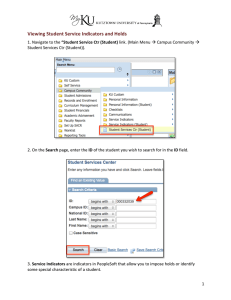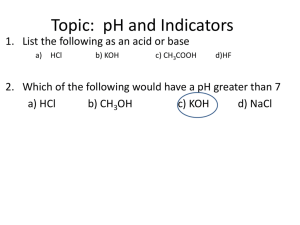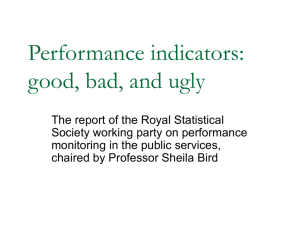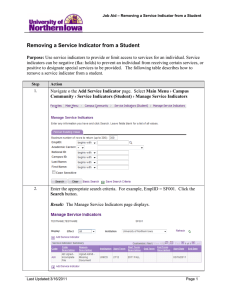Integration report Federal state BAMF Indicator set for
advertisement
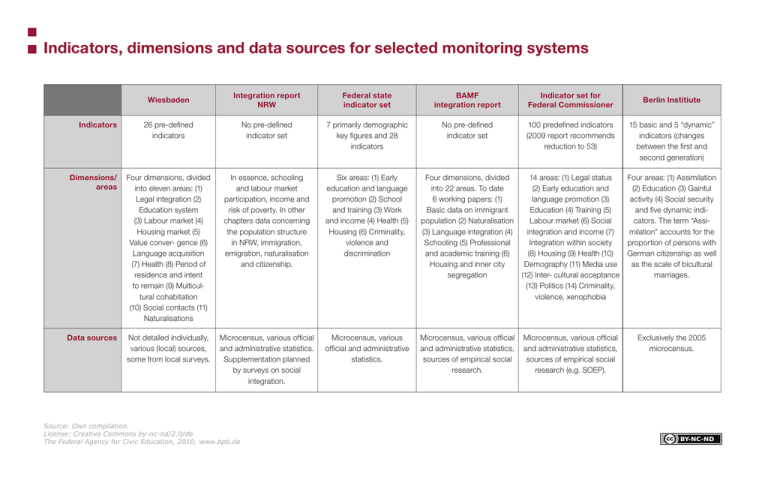
Indicators, dimensions and data sources for selected monitoring systems Wiesbaden Integration report NRW Federal state indicator set BAMF integration report Indicator set for Federal Commissioner 26 pre-defined indicators No pre-defined indicator set 7 primarily demographic key figures and 28 indicators No pre-defined indicator set 100 predefined indicators (2009 report recommends reduction to 53) Dimensions/ areas Four dimensions, divided into eleven areas: (1) Legal integration (2) Education system (3) Labour market (4) Housing market (5) Value conver- gence (6) Language acquisition (7) Health (8) Period of residence and intent to remain (9) Multicultural cohabitation (10) Social contacts (11) Naturalisations In essence, schooling and labour market participation, income and risk of poverty. In other chapters data concerning the population structure in NRW, immigration, emigration, naturalisation and citizenship. Six areas: (1) Early education and language promotion (2) School and training (3) Work and income (4) Health (5) Housing (6) Criminality, violence and discrimination Four dimensions, divided into 22 areas. To date 6 working papers: (1) Basic data on immigrant population (2) Naturalisation (3) Language integration (4) Schooling (5) Professional and academic training (6) Housing and inner city segregation Four areas: (1) Assimilation 14 areas: (1) Legal status (2) Education (3) Gainful (2) Early education and activity (4) Social security language promotion (3) and five dynamic indiEducation (4) Training (5) cators. The term “AssiLabour market (6) Social milation” accounts for the integration and income (7) proportion of persons with Integration within society German citizenship as well (8) Housing (9) Health (10) as the scale of bicultural Demography (11) Media use marriages. (12) Inter- cultural acceptance (13) Politics (14) Criminality, violence, xenophobia Data sources Not detailed individually, various (local) sources, some from local surveys. Microcensus, various official and administrative statistics. Supplementation planned by surveys on social integration. Microcensus, various official and administrative statistics. Microcensus, various official and administrative statistics, sources of empirical social research. Microcensus, various official and administrative statistics, sources of empirical social research (e.g. SOEP). Indicators Source: Own compilation. License: Creative Commons by-nc-nd/2.0/de The Federal Agency for Civic Education, 2010, www.bpb.de Berlin Institiute 15 basic and 5 “dynamic” indicators (changes between the first and second generation) Exclusively the 2005 microcensus.

